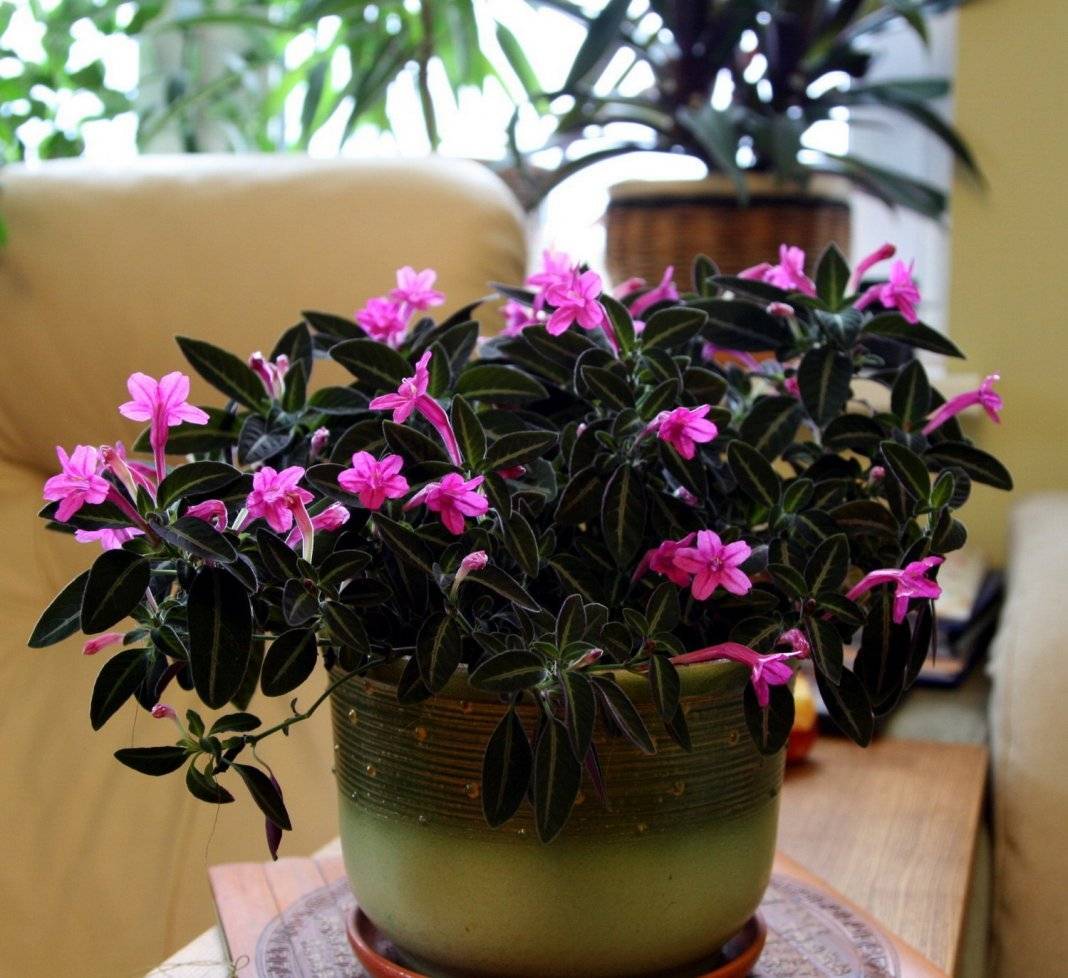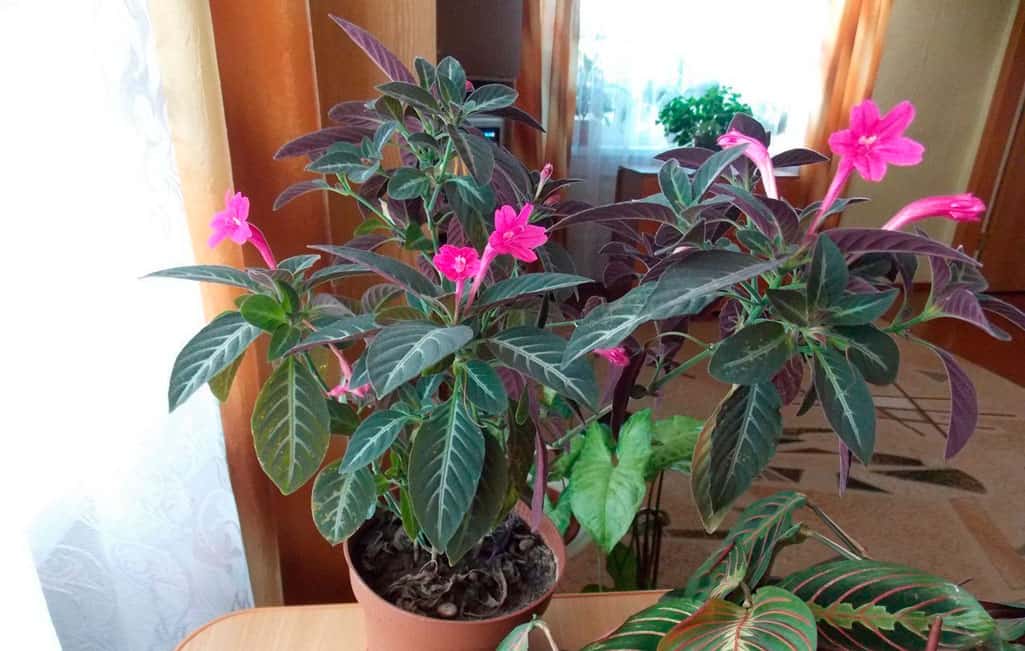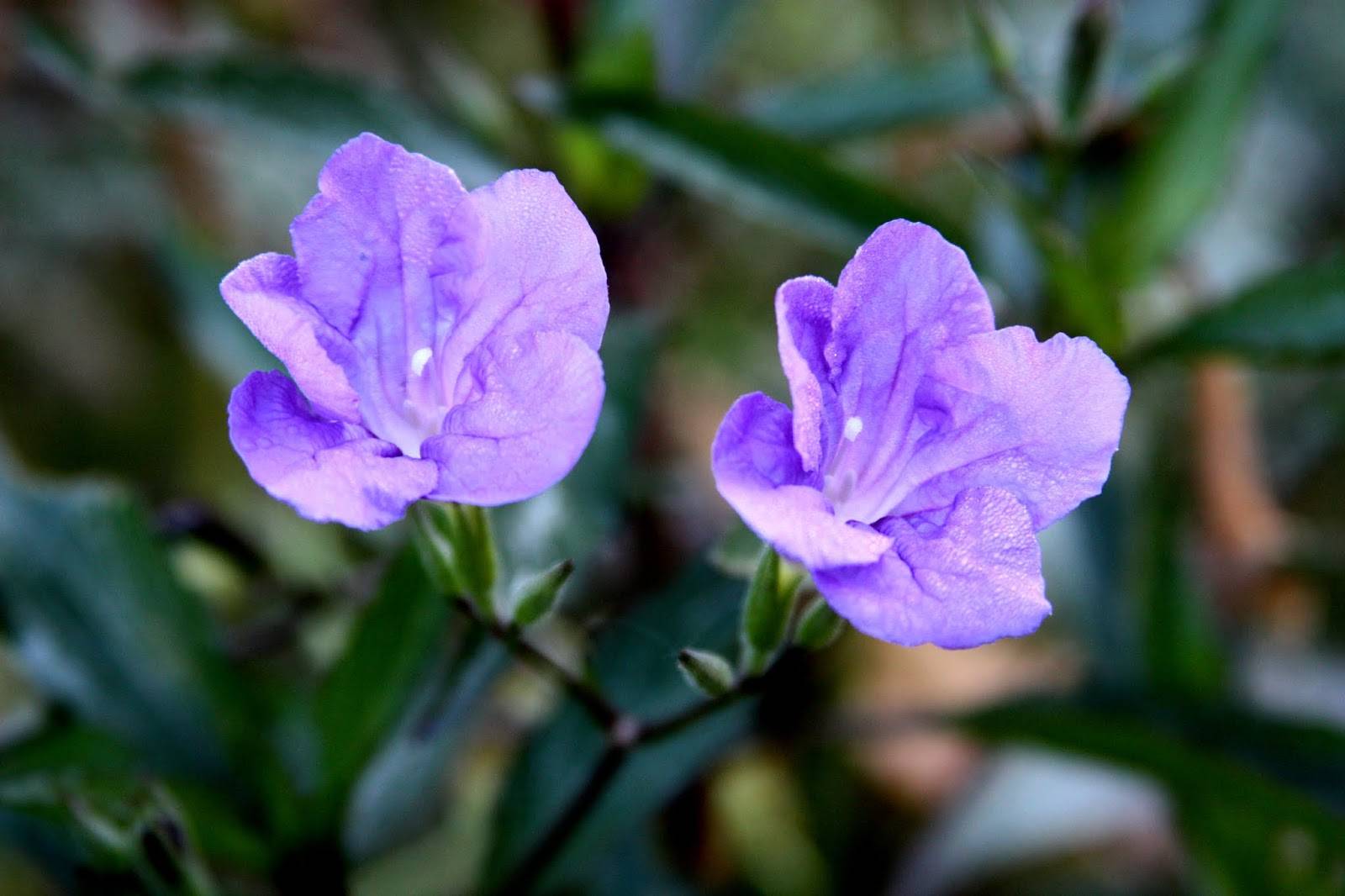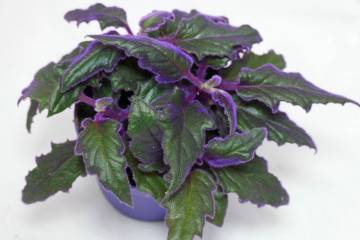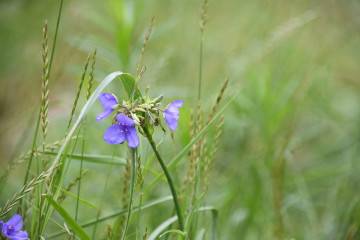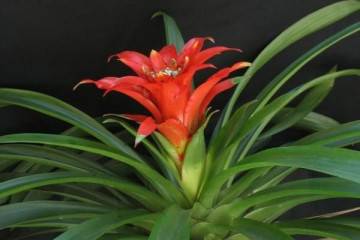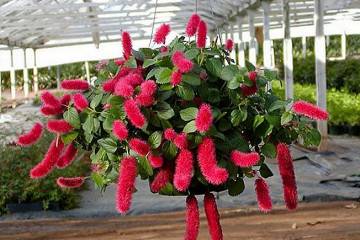Ruella - home care
Content:
Ruellia is a flower that is prized for its beautiful rare and short flowering, as well as its exotic appearance. Another great advantage of the flower is its velvety leaves. The plant is not so easy to find in flower shops, but the purchased specimen is practically no hassle.
Ruelle - what is this flower
Ruellia is a thermophilic ornamental flowering plant that belongs to the Acanthus family. A fast-growing flower with a pleasant appearance, it is known for its buds opening and falling on the same day.
Brief description and history of origin
The plant got its name in honor of its discoverer J. Roule, who was a botanist and lived in France in the Middle Ages. Another name for ruella is dipteracanthus.
Ruellia can reach a height of 2 m, grows as a shrub and herb. The leaf plates of the bush are elongated and painted in a rich green color, but there are varieties with light green veins. Varieties with patterned foliage are very rare. The shoots are similar to lianas, so the plant is grown in hanging flowerpots.
Dipteracanthus is native to the tropics of the American continent, but varieties are found in Africa and Asia.
Varieties of indoor plants with names
There are over 230 species of ruelia in nature. Basically, they all belong to herbaceous plants, and only a small part are shrubs or semi-shrubs. At home, only about 15-20 varieties are grown.
Ruellia portellae
Ruelia Portella has lodging shoots, so it is classified as a herbaceous variety. When the nodes on the shoots touch the ground, they begin to take root. The leaf plates are colored dark green on the surface, and red on the back. The leaves have white stripes.
Ruellia Devosiana
Devoza also has other names: ruella blue and ruella Devo. It grows no more than 50 cm in height. The description of the leaves is the same as that of Portella: the front side is green with light veins, and the back is reddish. However, the flowers are much smaller than those of other varieties. They are painted in white and pale lilac colors. Devoza usually blooms closer to winter.
Puellia large-flowered (Ruellia macrantha)
Large-flowered Dipteracanthus has branched, but erect shoots, and the flowers are bell-shaped, they are large in size, almost 10 cm in length and the same in width. Flowers are located at the top of the stems. Flowering occurs in late autumn or early winter.
Ruellia Britton (Ruellia brittoniana)
Ruellia Britton grows up to one meter in length with erect stems. They have lanceolate leaves of a dark green color. The leaf plates are approximately 25 cm long, but only 2-3 cm wide. The flowers are bluish purple in color.
Caring for ruella at home
This is a very unpretentious and non-capricious ruelia flower, home care will not cause much trouble for flower growers.
Illumination and temperature conditions
Dipteracanthus needs good lighting, so it is worth growing it on the southern and western windowsills. Due to a lack of lighting, the plant will begin to pull out shoots, and flowering may not occur.
The temperature should also be above average, in the range of 21-26 ° C. During the rest of the flower in winter, the temperature is lowered to 17 ° C.
Watering rules and humidity
You need to water the bush regularly so that the soil is constantly moist, but you do not need to fill the flower either. It is recommended to always loosen the soil by 3 cm after watering. In winter, watering is reduced.
Moisture readings should be above average. Due to heating in winter, the air becomes dry, so you need to increase it yourself. You can buy special air humidifiers or do it in the folk way: put a damp cloth on the heating pipe.
Top dressing and soil quality
Caring for ruella is not complete without regular feeding. The first is applied in the spring; for this, complex mineral fertilizers are used. Subsequently, it is necessary to feed Scvarroza ruelia and any other variety twice a month. For feeding, it is better to use liquid fertilizers, they are well absorbed and quickly saturate the plant with nutrients.
Flower container size
It is recommended to grow ruelia in wide containers that can be hung. Do not choose large pots, otherwise, after each watering, moisture will collect and stagnate, which will ruin the soil.
Pruning and replanting
To make the ruella bloom and achieve lush foliage, pruning should be done periodically. At the end of winter, with the end of the dormant period, the plant will begin to reach for light. During this period, the middle shoots are cut off by a third of their height, and the longest are cut in half. During the summer, pinching is carried out to give the bush a pleasant decorative look.
In the early years, transplants are required annually. The root system grows, so you need to replace the pot with a more spacious one and change the soil with fertilization.
Features of flowering plants
Dipteracanthus rarely blooms. Flowering lasts no more than two months, while a single flower blooms and falls in one day.
A period of activity and rest
The active period for ruelia is from March to November or December. In winter, the plant must have a rest period to gain strength. During this period, the pot is removed to a shaded place and the temperature is lowered. Watering and feeding are also reduced.
Types and shape of flowers
The flowers are tubular at the base and open towards the ends. They are small in size, the diameter of the bud is not more than 10-12 cm. The flowers are located on the upper part of the shoots and are painted in light purple, white, beige or purple.
Reproduction of ruelia by cuttings
The most convenient and effective way to propagate Dipteracanthus is by cuttings. Cuttings are cut from strong, but not lignified lateral shoots. Each stalk is placed in water to root. The room temperature should be around 23 ° C. When the rooting of the cuttings begins, it is necessary to plant them in separate pots in the substrate.
Growing problems, diseases and pests
The plant has a high resistance to diseases, but if poorly looked after, it can get sick with root rot. Sometimes a whitefly or aphid appears on the bush, which makes the bushes turn yellow and begin to wither.
To destroy whitefly and aphids, you need to treat the bush with actellik. The procedure is carried out in the morning or in the evening for 4 days. After a three-day break, processing is carried out again.
Ruellia is a rare decorative flower that looks beautiful in home interiors. The flower practically does not get sick and does not bring much trouble to its owners in care. But some nuances are still worth knowing.
